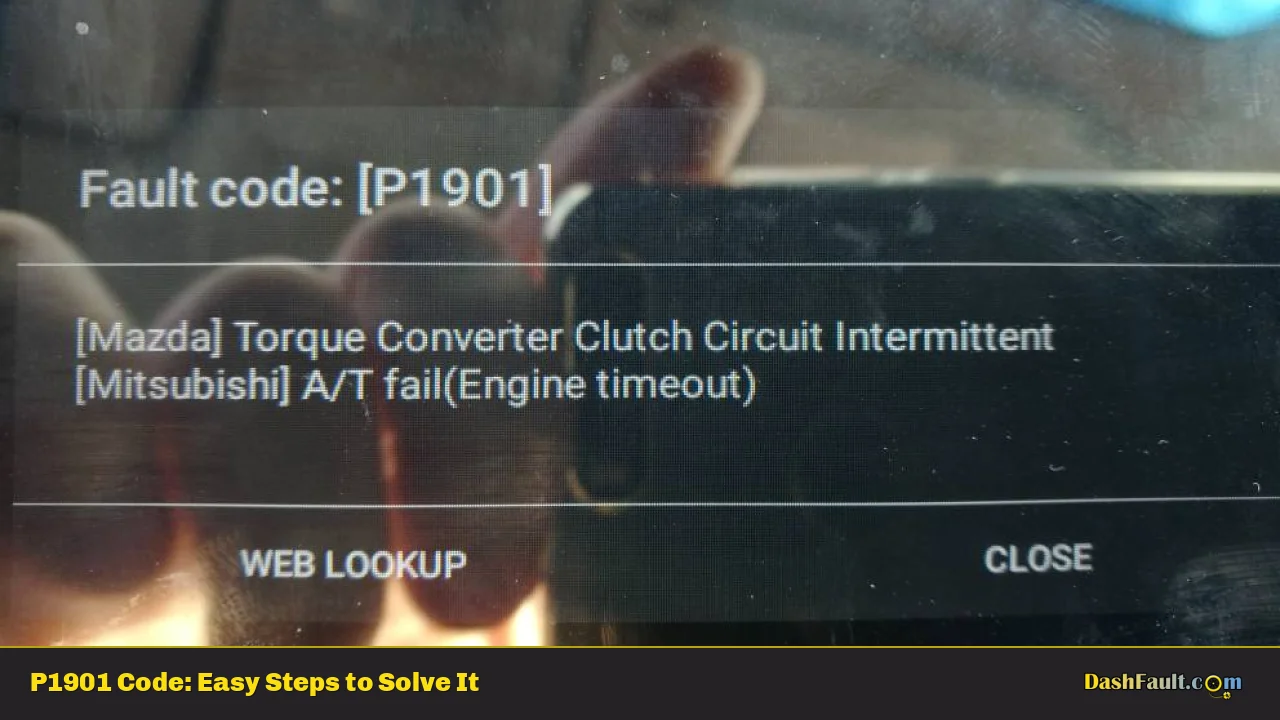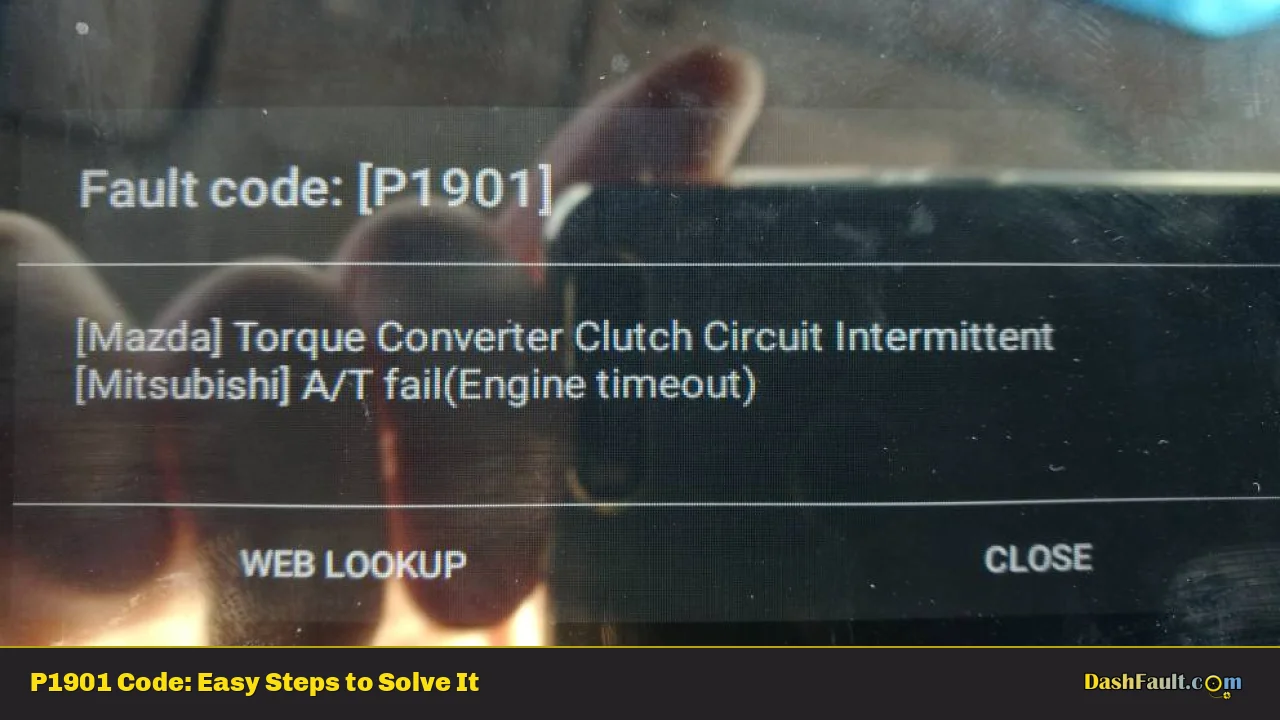The P1901 trouble code is a diagnostic trouble code (DTC) that indicates an issue with the turbine shaft speed sensor circuit. This code is commonly encountered in vehicles equipped with electronically controlled automatic transmissions. When the powertrain control module (PCM) detects an intermittent signal from the turbine shaft speed sensor, it triggers this code, which can lead to various performance issues. Understanding and resolving this code is crucial for maintaining vehicle performance and safety.
| P1901 Code Meaning | P1901 Code Common Causes |
|---|---|
| Turbine Shaft Speed Sensor Circuit Intermittent | Faulty turbine shaft speed sensor |
| Intermittent signal from the sensor | Wiring issues (shorts or breaks) |
| PCM malfunction | Corroded or loose electrical connections |
| Transmission fluid issues | Faulty transmission control module (TCM) |
| Improper alignment of transmission components | Software glitches in the PCM |
Symptoms of P1901 Code
The symptoms associated with the P1901 code can vary, but they often include:
- Illuminated Check Engine Light: The most common indication that a DTC has been triggered.
- Harsh or Erratic Gear Shifts: Drivers may notice that the vehicle shifts gears unpredictably or roughly.
- Loss of Power: The vehicle may experience a decrease in acceleration or overall power.
- Transmission Slipping: The transmission may slip out of gear unexpectedly.
- Increased Fuel Consumption: Poor transmission performance can lead to inefficient fuel usage.
Technical Explanations
The turbine shaft speed sensor measures the rotational speed of the turbine within the transmission. This data is critical for the PCM to determine when to shift gears and how much power to send to the wheels. When the PCM detects an intermittent signal from this sensor, it assumes there is a fault in the circuit, leading to the P1901 code being triggered.
How the System Works
- Sensor Functionality: The turbine shaft speed sensor generates a voltage signal based on the rotational speed of the turbine.
- PCM Interpretation: The PCM interprets this signal to manage shifting and optimize engine performance.
- Error Detection: If the signal is inconsistent or absent, the PCM will log a P1901 code and may enter a fail-safe mode to protect the transmission.
Step-by-Step Diagnosis
Diagnosing a P1901 code involves several steps:
- Scan for Codes: Use an OBD-II scanner to confirm that P1901 is present and check for any additional codes that might provide further insight.
- Visual Inspection:
- Check wiring and connectors related to the turbine shaft speed sensor for signs of damage, corrosion, or loose connections.
- Inspect the transmission fluid level and condition; low or dirty fluid can affect sensor performance.
- Test Sensor Output:
- Using a multimeter, measure the voltage output from the turbine shaft speed sensor while the engine is running.
- Compare readings with manufacturer specifications to determine if the sensor is functioning correctly.
- Check PCM Functionality:
- If all else appears normal, consider testing or reprogramming the PCM as it may not be processing signals correctly.
- Examine Related Components:
- Inspect other transmission components like solenoids and valves that could affect shifting behavior.
Solution Methods
Resolving a P1901 code typically involves one or more of the following solutions:
- Replace Turbine Shaft Speed Sensor: If testing indicates that the sensor is faulty, replacing it will often resolve the issue.
- Repair Wiring Issues: Fix any damaged wires or connectors found during inspection.
- Flush Transmission Fluid: If fluid condition is poor, perform a flush and replace with fresh fluid.
- Reprogram/Replace PCM: If no other issues are found, consider reprogramming or replacing the PCM if it’s determined to be malfunctioning.
Cost Estimates
The cost to repair a P1901 code can vary widely based on several factors:
- Turbine Shaft Speed Sensor Replacement: $100 – $300 (parts and labor)
- Wiring Repairs: $50 – $150 depending on complexity
- Transmission Fluid Flush: $100 – $200
- PCM Reprogramming/Replacement: $200 – $800 depending on vehicle make and model
It’s advisable to obtain quotes from multiple repair shops to ensure competitive pricing.
Warnings and Recommendations
- Always ensure that repairs are performed by qualified professionals if you are unsure about any procedures.
- Regularly maintain your vehicle’s transmission system by checking fluid levels and conditions to prevent future issues.
- If you experience significant symptoms such as slipping gears or loss of power, it’s best to stop driving immediately and seek professional assistance.
Closing Paragraph
The P1901 trouble code can lead to significant performance issues if not addressed promptly. By understanding its meaning, symptoms, causes, and solutions, vehicle owners and DIY mechanics can effectively diagnose and resolve this issue. Regular maintenance and timely repairs will help ensure your vehicle operates smoothly and reliably.
Frequently Asked Questions About P1901
- What does P1901 mean?
P1901 indicates an intermittent signal from the turbine shaft speed sensor in your vehicle’s automatic transmission. - What are common symptoms of P1901?
Common symptoms include harsh gear shifts, illuminated check engine light, loss of power, and increased fuel consumption. - How can I diagnose a P1901 code?
Diagnosing involves scanning for codes, inspecting wiring/connectors, testing sensor output, and checking related components. - Is it safe to drive with a P1901 code?
No, it’s advisable to avoid driving until repairs are made as it can lead to further transmission damage. - Can I fix P1901 myself?
If you have mechanical experience, you can attempt repairs; otherwise, consult a professional mechanic. - What might cause a P1901 code?
Causes include faulty sensors, wiring issues, PCM malfunctions, or low transmission fluid levels. - How much does it cost to fix a P1901 code?
The cost can range from $100 for minor repairs up to $800 for PCM replacement. - When should I seek professional help for P1901?
If you’re unsure about diagnosing or repairing your vehicle’s transmission system, it’s best to consult a professional.

